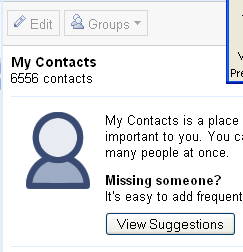This week Microsoft announced its Windows Live Writer. Here to tell you about is Newt Barrett, who is CEO of Succeeding Today (Newt@SucceedingToday.com). Newt and I worked together at CMP during another era in tech publishing. Take it away, Newt.
Something is afoot at Microsoft.
t has to do with a product that was quietly released in beta in mid-July and announced this past week. It’s called. It’s slick. It’s solid. And it’s free.
Live Writer is an intuitive, WYSIWYG blogging editor that enables bloggers to manage multiple blogs on multiple platforms–either online or offline. In fact, I’m writing this article with Live Writer.
But this week’s release of Live Writer isn’t just about a product. It’s about Microsoft reasserting application dominance in a world of consumer-created content.
Free is a Strategy that Works for Microsoft
Although Bill Gates prefers to get paid for software, he knows how and when to give it away free. Just think back to 1995 when Microsoft first started to take the Web seriously. In May 1995, a few months before the launch of the much hyped Windows 95, Bill Gates wrote a legendary memo, entitled, “The Internet Tidal Wave.”
“It’s the most important single development” since the IBM PC.”I have gone through several stages of increasing my views of its importance. Now, I assign the Internet the highest level.”(as quoted in Business Week, July 15, 1996) What followed within 12 months was a seismic shift in strategy that put the Internet at center stage for the software company and for many of us too.
Microsoft was late to the party, but not too late to crush a once arrogant Netscape. While Netscape was charging $50/copy for its browser, Microsoft readied the launch of Internet Explorer in 1996 at a much lower price: FREE. As Bill Gates cheerfully noted in a press conference at the launch of IE, “It’s priced to sell.”
It looks as though Microsoft is making another strategic move that’s all about the Internet–and about blogging.
What Makes Live Writer So Important?
Microsoft, like the Japanese, tends to take the long view. They may be late to the party. They may appear to have missed an opportunity. But, once they decide they must dominate a market they will do whatever it takes.
“I think blogging is super-important and we’ve got to do a lot more software.” That’s what Bill Gates said in a January 7, 2005 interview on the blog, Gizmondo. Clearly, he was telegraphing what they’re now doing.
Microsoft’s approach with Live Writer is intriguing–not just because it’s a beta product that works with very few glitches, but because it plays nice with others.
Here’s how it works:
You download and install it. (http://get.live.com/betas/writer_betas) LW will work even when you are not connected to the Internet. Next, you tell LW about your blogs. It works with WordPress, Typepad, Blogger, and Microsoft’s own Live Spaces. You show it how you log on and then let it match your style by posting a test blog that it immediately removes. You can submit either a post or a page, and then it pulls down your categories and lets you set a publish date.
You can edit and resubmit your posts, and you can pull down posts that you had made before using LW in order to edit them. Its WYSIWYG tools enable you to format a page easily, insert tables, photos, website images, and videos, and create hyperlinks and tags. It works effectively even on a small laptop screen and works with voice dictation on the Vista platform .It has some nice plug ins both from Microsoft and from third party developers – one notable and symbolic example is “Blog this from Firefox” tool. Imagine developing something that works seamlessly with Firefox!
The Bottom-line
Live Writer is capable and easy to use. It matches the very attractive price of Internet Explorer–free. It works just as easily with WordPress as with Live Spaces. It’s just as useful offline as on. Within a day of using it, Live Writer has become my blog editor of choice.
Microsoft was heavy-handed in destroying Netscape. Live Writer demonstrates that Microsoft is just as determined to win in the blogosphere as it was to win on the Web browser. In 2007 it looks as though Microsoft will do it with a great product that actually plays nice with others. What a nice surprise. Of course, you still need XP SP2 or Vista, maybe someday it will run on a Mac!
 So I have either 6556 or 9788 contacts in my Gmail contacts address book. Why the difference? It has to do with the way the contacts are displayed, I kid you not.
So I have either 6556 or 9788 contacts in my Gmail contacts address book. Why the difference? It has to do with the way the contacts are displayed, I kid you not.